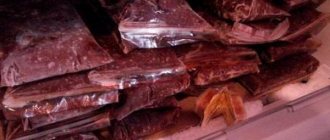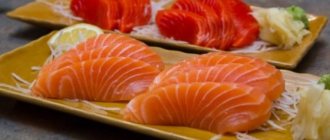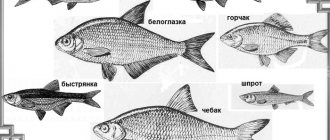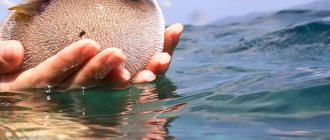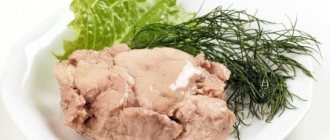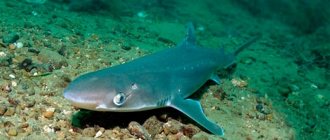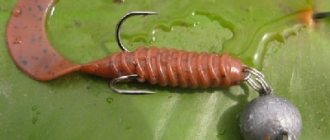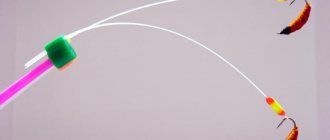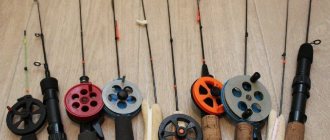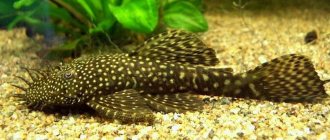What is compound feed?
Compound feed consists of purified and crushed feed mixture of plant and animal origin. To enrich it, vitamins, micro- and macroelements, enzymes and other components necessary for the normal growth and development of farm animals are added. It is a homogeneous mass, ready for use. It can be produced in briquetted, granulated and loose form.
Main components:
- grain crops, carbohydrate-containing products (wheat, barley, oats, millet, triticale, corn) - up to 85%;
- cake meal (flax, soybean, sunflower) - up to 15–25%;
- legumes with a high protein content (soybeans, beans, peas, chickpeas, lupine) - up to 45%;
- oilseeds (rapeseed, sunflower, cotton, camelina, rapeseed) - up to 15%;
- hay, straw, other roughage with a high fiber content;
- grain and food industry waste;
- amino acids;
- mineral mixtures;
- vitamin supplements;
- antibiotics and biostimulants.
All components are selected taking into account the chemical composition. They complement each other and contribute to better absorption of nutrients necessary for animals. Therefore, they are suitable for organizing rationed feeding and can be used in intensive livestock farming. High-quality animal feed is the basis of profitable livestock farming.
Menu for predators, bottom fish and fry
The diet of predatory fish is based on live food:
- bloodworm;
- larvae;
- worms;
- fish.
We recommend reading
Choosing a name for an aquarium fish
For bottom dwellers, it is important that food quickly reaches the near-bottom space (then fish of other species will not be able to eat it earlier). The most reliable in this regard are tableted feeds.
You can also diversify the menu with proteins:
- vegetable (cucumbers, spirulina, lettuce);
- animals (coretra, tubifex, bloodworm).
In developing young animals, the basis of the diet is one of the following products:
- live dust (with daphnia, rotifers, ciliates);
- ciliates slipper (you can grow it yourself);
- pot worms (live in damp compressed peat and feed on cheese - dry and crushed);
- nematodes;
- egg yolk (carefully mashed and washed).
The final choice in this case remains with the owner of the fry.
Main types and types
Depending on the purpose, compound feed is produced in three main types.
- Complete feed - completely covers all the needs of animals and poultry for nutrients, biologically active and mineral substances. Used daily as the only food. This diet is used in feeding fish, chickens, geese, ducks, rabbits, pigs, horses and young animals of other species. Products are marked with PC indices.
- Concentrated feed is not an independent feed, but only an addition to the main diet. Such animal feed cannot be used as the only feed. It is characterized by a high content of vitamins, microelements, and biologically active substances. A concentrate is produced for animals of all production groups. It supplements the feed with essential substances that are lacking in the local feed supply. The compositions are marked with the letter K.
- Balancing feed additives - protein-vitamin-mineral compositions (BVD, BMVD, master concentrates). They are homogeneous mixtures of high-protein feed components and useful microadditives intended for specific animals. In the production of additives, waste from the oil extraction industry, grass meal, yeast, biologically active substances, and animal feed are often used. They are not used in feeding on their own. As a rule, BMVD is introduced into grain fodder in an amount of 20–25% of the total mass.
Premixes are included in a separate group. They are a mixture of biologically active substances with filler. Premixes are used to enrich animal feed or improve the composition of BVMD. In addition to vitamins, amino acids and minerals, the premix may include substances with stimulating properties. They have a positive effect on the digestibility of feed and increase the resistance of animals to diseases, since they may contain drugs.
Types of feed
Modern pet stores offer a wide variety of similar products from a variety of manufacturers. If desired, the aquarist can easily select the optimal food for the fish, depending on their natural preferences. To purchase really good, and most importantly, suitable food for your pets, you need to consider the options available on the market.
Dry food
Many aquarium owners choose this particular product because it is extremely convenient to store and use, and in addition, it is inexpensive and can be used rationally for months at a time. As a rule, such food is available in the following forms:
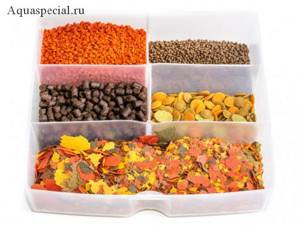
Dry food is easy to store and use, has economical consumption and low cost.
1. Tablets . They have quite heavy weight and density, due to which they immediately fall to the bottom. Accordingly, they are suitable for those types of fish that stay near the bottom and their mouth is located below. That is, first of all, these are various catfishes (pterygoplichts, ancistrus, corydoras, etc.). These tablets contain natural ingredients of both plant and animal origin (since there are many species of catfish, and among them there are both herbivores and predators);
2. Cereals . It is perhaps difficult to find a more universal food today. It is made by many manufacturers. It often contains a wide variety of substances, so it is suitable for almost all types of fish. Unlike tablets, flakes have a fragile structure, so they generally do not sink. They need to be fed to those inhabitants of the aquarium that swim in the middle or upper layers and can capture food from the surface (tetra, barb, platie, mollies, neon, cardinal, guppies, etc.). However, it is worth noting that the flakes themselves have little nutritional value, so they should only be used as a supplement;
3. Granules . They come in different variations, but in any case they are also universal and suitable for most aquarium inhabitants. Depending on the composition, they can float or sink. You also need to know how to feed your fish correctly. The main nuance of granules is that upon contact with water they swell greatly. Therefore, you should not immediately throw food into the aquarium. The inhabitants will swallow it, and only then will it begin to increase in their stomach, which can lead to problems with the digestive tract, even death.
When using granules, they must (!) be soaked for at least 10 minutes, and only then given to pets
4. Microfeeds . This is a special variety. They also have the necessary beneficial substances, but are produced in the form of dust. This fraction is explained by the fact that it is, in fact, food for fry. It is very convenient, but it pollutes the water a lot, so you will have to change it more often.
Alive
For the health of aquarium inhabitants, as well as their good growth, the best choice is live fish food. It contains a lot of protein, which is so necessary for every living creature, since it is a “building material” for the body. In addition, thanks to it, fish reach sexual maturity, and some species begin spawning only after the aquarist intensively begins to feed potential parents with good live food.
This type of food has its drawbacks. Firstly, it can spoil the water, and secondly, it carries certain types of infections and bacteria, which can cause pets to get sick. But if you store live food correctly and buy it from trusted sellers, then such problems should not arise.
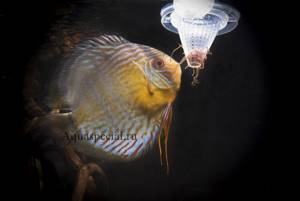
Live food contains a large amount of protein, which has a beneficial effect on the pet’s well-being.
Among all the variety, the following types of live food are especially popular:
1. Bloodworm . It was incredibly popular back in Soviet times, and does not lose its relevance today. Not surprising, because mosquito larvae contain about 60% protein. Many aquarists even believe that this is the best food among all that is currently sold in pet stores. But you should buy it carefully so that the fish do not get poisoned. Firstly, the bloodworm should have a deep red color. Secondly, it is important that it is still alive, which already indicates freshness. After buying a house, the food should be thoroughly inspected, dead larvae should be selected, washed under the tap and left in the refrigerator for three days;
2. Koretra . These are also mosquito larvae, but not blood-sucking ones. Unlike bloodworms, they are colorless. They are a safer feed option, but less effective, as they contain only 40% protein. It is advisable to combine Koretra with other foods and give it no more than a couple of times a week. Storage conditions are similar. When choosing, you need to pay attention to the mobility of the larvae, the absence of an unpleasant odor and plaque;
3. Tubifex . These are large annelids that have a very beneficial composition, but they are also carriers of bacteria. Accordingly, you need to be careful when feeding. After purchase, the pipe maker must undergo a week-long quarantine. Store it in the refrigerator in a container with water. Wash twice a day and remove dead worms. It is better to give through a special feeder;
4. Daphnia . In nature, it is found in freshwater bodies of water. Actively reproduces when water blooms. Essentially, it is a small crustacean that is half protein. It is small in size, so it is mainly used for raising fry. Also stored in a container of water in the refrigerator;
5. Artemia . These are planktonic organisms that live in bodies of water with a high salt content. Therefore, among all live food they are the safest. These crustaceans have a high content of protein and fat, and in terms of the number of amino acids they are even ahead of cod. However, it is worth giving artemia carefully so as not to cause obesity in the fish. It is advisable to combine it with other foods and add it to the aquarium 1-2 times a week.
Frozen
You can buy frozen fish food at every pet store. Essentially, these are the same crustaceans and worms that were described above. Of course, other products are added to them, such as ciliates, cyclops, etc. This food has already been processed by the manufacturer and can simply be stored in the freezer. It is often produced in the form of tiles.
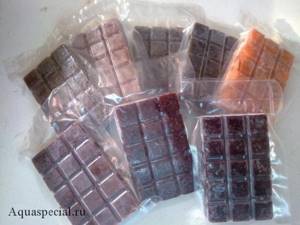
Feed composition
Fish feed for carp is created for feeding fish in private reservoirs of pond farms; they contain balanced components that have a beneficial effect on representatives of the ichthyofauna. During their production, vitamins and microelements are strictly dosed.
The compositions may be different, but they are all based on two basics:
- ground crackers;
- bran of cereal crops.
One of the most important components of feed is protein; it comes into mixtures in the form of soybean or sunflower cakes. Moreover, the first option is preferable, since sunflower pomace does not last long due to the high oil content, which, as is known, can quickly go rancid.
In total, the combined fish feed can contain up to forty components, including:
- grains of various fractions;
- legumes;
- cakes;
- meal;
- mineral elements;
- sapropel;
- animal components: daphnia, fish meal, ground shells.
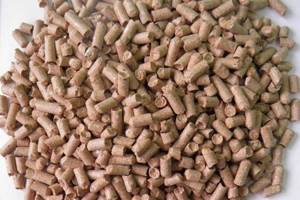
According to the chemical composition, fish feed should contain the following substances:
- proteins, the amino acids of which have a positive effect on the growth, especially of young animals;
- fats that act as a source of energy for fish;
- carbohydrates in the form of plant fiber to balance nutrition;
- minerals and vitamins for the completeness of the feed composition;
- enzymes and premixes as biologically active substances that help in the absorption of food.
The mechanical component of combined feeds is also important so that they are completely consumed by the fish without leaving residues clogging the reservoir. Therefore, the following requirements must be met:
- the strength of the granules that make up the feed;
- time-controlled solubility;
- balanced nutritional properties.
Attention! It is on the basis of conventional feed that bait is created, which works best in the reservoirs of pond farms when fishing for carp fish: grass carp, carp, crucian carp, bream and silver carp. For fishing on a platform, the main thing is to choose the right feed composition.
Selection of dry food
You should carefully study the composition of fish food. It can be dried and alive. Feed is also divided into mixtures of long-term (up to 2 years) and short-term storage. The longer the food sits (more than 4 months), the less nutrients remain in it. Dry food is stored in a cool place in light-proof jars or bags that close tightly.
We recommend reading
How to choose a fish feeder for an aquarium
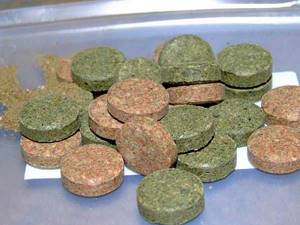
Tablets have a relatively large weight, and therefore immediately sink to the bottom, where aquatic organisms and bottom fish (for example, catfish) can feast on them.
Flakes and chips - these two types of food are very similar, but flakes have a more fragile structure and, when they get into the water, they begin to disintegrate almost immediately. Thicker chips also become soggy from moisture, but this happens much more slowly. This dry food is suitable for any fish. However, it does not have much nutritional value, and therefore is not used every day.
Granules and sticks - granules made from a nutrient substance are divided into floating and sinking. The choice of a specific species depends on where exactly the fish lives in the aquarium. Granulated food has a dense structure, expands when it gets into water, and disintegrates very slowly.
Microfeed - such food is most often intended for fry. To make it, the raw materials are ground to a dusty state. Some people make their own dry fish food.

Compound feed for fish - components and chemical composition.
Wheat, barley, oats
These are the main components of feed used in feeding trout and sturgeon. Chemical composition of wheat: - protein - 13%; — fat – 2.3%; – starch – 60%. PS: here and below the average percentage of substances per 1 kg of dry matter is indicated. Amino acid content – 107.2 g/kg (hereinafter – per kilogram of raw materials). The amount of energy is 3892 kcal/kg. Energy-protein ratio – 32:1. Main proteins: prolamine and glutenin. They form gluten, which is necessary to obtain feed pellets that are resistant to water. Wheat protein is poor in methionine and lysine. Barley and oat grains are first removed from the hulls before being used as a component of feed. Chemical composition of barley: - protein - 10.5%; — fat – 2.2%; — fiber – 5.5%; – carbohydrates – 66%. The total amino acid content is 101.9 g/kg. The amount of energy is 3839 kcal/kg. Digestible energy – 56.3%. Energy-protein ratio – 34:1. Chemical composition of oats: - protein - 11.5%; — fat – 5.3%; — fiber – 10.5%; – carbohydrates – 45%. Amino acid content – 89.9 g/kg. The amount of energy is 3972 kcal/kg. Digestible energy – 48.3%. Energy-protein ratio – 38:1. All cereals are low in minerals and vitamins.
The feed ratio for valuable fish is not established, since pure wheat, barley, and oats are not fed to them. When feeding carp only with cereals, this figure is 4-5 kg (per kilo of increasing mass).
Corn
Due to its low nutritional value, corn grain is rarely included in the feed of valuable fish species. Chemical composition of corn: - protein - 13.5%; — fat – 4.7%; — fiber – 2.5%; – carbohydrates – 65%. Amino acid content – 86.5 g/kg. Total energy – 3965 kcal/kg. Digestible energy – 66.5%. Energy-protein ratio – 38:1. Corn contains few minerals and vitamins, but several times more carotene than other grains.
Peas
This leguminous crop is not used as an independent feed. Peas are many times superior to grains in protein, but their biological value is low. It is low in methionine. Chemical composition of peas: - protein - 20-28%; — fat – 1.5%; — fiber – 5.8-6%; – carbohydrates – 54%. Total amino acids – 196.5 g/kg. The amount of energy is 3969 kcal/kg. Digestible energy – 43.9%. The energy-protein ratio is 17.5:1.
The feed ratio of peas for cold-loving aquaculture objects has not been established. In warm-water fish farming, specializing in carp breeding, it is 3-5 kg.
Soybeans
Refers to grain legumes. The percentage in carp and trout feed is 50-70%. This is a good alternative to fishmeal. Chemical composition: — protein – 35%; — fat – 18%; — fiber – 5%. Total amino acids – 298.1 g/kg. Energy value – 5017 kcal/kg. Energy-protein ratio – 14:1. The content of minerals and vitamins is quite high, especially a lot of choline, pantothenic and folic acid.
Soybean grains contain compounds (hemagglutonins, urease, lipoxidase, saponins and estrogens) that hinder the digestion of proteins and have a toxic effect. They are neutralized by heat treatment of the grain. Neutralized grain can be added to the feed of fish of all ages and species. The estimated feed coefficient is 2-3 kg.
Wheat bran
It is a by-product of varietal wallpaper milling of wheat. Bran contains more protein, fat and minerals than wheat grain. Total amino acids – 122.4 g/kg. Energy content – 3914 kcal/kg. Digestible energy – 55%. Energy-protein ratio – 25:1.
Feed ratio of wheat bran is 4-7 kg/per kg.
Groundbait from mixed feed and grain mixtures
Recently, carp fishing using grain has become popular. Therefore, carp fishermen are increasingly using grain mixtures as complementary food.
After all, they are ideally combined with attachments in the form of corn, peas, chickpeas, etc.
However, feeding with grain mixtures is rational only in warm water, when the carp becomes voracious and there is no risk of overfeeding it. After all, they are quite nutritious and high in calories.
Grain mixture for feeding can be purchased at the store. Although many people prefer to prepare it themselves. It is not difficult. The main thing is to know the composition of bait grain mixtures.
You can buy ready-made grain mixture for bait or mix all the ingredients yourself
Let us remind you that they usually include the fruits of the following plants:
- corn;
- wheat;
- hemp;
- nuts;
- peas;
- beans;
- lupine and many others etc.
The most interesting grain bait for carp of all those listed is hemp. It is enough that carp fish simply adore these grains.
In addition, hemp is quite small, and it contains a lot of oil, proteins, vitamins, amino acids and various substances that improve the digestion process. As a result, it is very difficult for carp to get enough.
This fact only stimulates his appetite and makes him feed more actively, which, naturally, has a good effect on the bite.
Carp can also bite on bait with mixed feed
On some ponds and lakes, groundbait based on mixed feed also performs well. It is especially effective in reservoirs where carp are specially bred for paid fishing.
After all, here, as a rule, owners or tenants of ponds use feed as a basis when forming the daily diet of fish. It turns out that the carp gets used to such food.
And in those places where they are fed with compound feed, they feed and bite much more actively.
Do not forget that the volume of grain (including feed) that will be consumed during fishing in a given day as bait is determined by the activity of the carp and the number of individuals in a given pond. In any case, such bait should be used carefully, since there is always a risk of feeding the fish and ruining the entire bite.
Store-bought and home-prepared bait
Today, commercial bait products are very common in carp fishing. They are quite balanced and have all the substances and elements necessary for the carp’s body.
In addition, store-bought bait has a complex and multi-component composition, which often already includes flavorings and odor and taste enhancers.
Therefore, most people prefer to use such a bait.ma
If you can’t or don’t want to cook with your own hands, you can buy ready-made bait
However, properly prepared carp bait at home will be in no way inferior to branded store-bought products.
Rather, on the contrary, it will easily surpass it in nutritional value and balance.
However, all this will require a lot of time, effort and many ingredients, which also need to be processed differently (some need to be cooked, others need to be chopped, etc.).
Therefore, preparing bait for carp yourself is not so easy. And many fishermen actively use store-bought bait mixtures. True, not in its pure form.
Ready-made commercial bait is mixed with other “simple” food. For example, with porridge, dough, boiled potatoes or cake.
Due to this, both the volume of complementary foods and its nutritional value increases.
Which feed to choose for fishing and how to use it
Even for a novice angler, it will not be a secret that without nutritious and attractive bait for fish there is no hope for a good bite and, accordingly, a decent catch.
Your personal secret recipe or a package of purchased bait specialized for a certain type of fish will never be a superfluous item when planning a fishing strategy and in most cases will contribute to the final success of fishing.
In the modern course of the development of fishing art, fans of this type of leisure and sport have to deal with a wide selection of all kinds of baits offered in stores. Sometimes even a professional finds it difficult to decide on the right choice of mixtures suitable for certain fishing conditions.
Baits often have to be combined, looking for the optimal taste, color, composition of ingredients and the size of their fractions. Purchased formulations take up a significant part of the fishing budget, which is also not the least factor in finding feeds that are more affordable in price but no less efficient.
Just the same, ordinary fish feed is quite suitable for the role of this type of bait and is considered a universal basis for preparing homemade bait mixtures, and even for use for baiting fish without any kind of additives.
The relatively low cost and widespread availability of the product has made bait from mixed feed for fishing the most popular product.
But, despite the wide popularity of the nutrient mixture, few fishermen imagine its real possibilities for positively influencing the fishing process.
Our article will be about these nuances of use and the positive aspects of this bait composition; having become familiar with it, the angler will continue to use the product in a new way, with an even higher degree of enthusiasm, in order to achieve personal fishing success.
Dry artificial food for aquarium fish
DRY FOOD FOR AQUARIUM FISH
The range of dry artificial food for fish is varied. Their quality has also improved significantly: containing many essential substances and balanced in composition (some foods combine three to four dozen animal and plant components), these foods will satisfy the needs of almost all popular types of aquarium fish. When choosing food, you should pay attention to the product manufacturer, composition, expiration date, as well as what group of fish it is suitable for.
Keep in mind that the information provided by manufacturers of artificial food is not enough to compare and evaluate them. When choosing food until today, the main criteria were the practice of use and the authority of the manufacturer.
Food for different groups of fish differs in the shape and size of particles, composition; they can float for a long time (chips and flakes, floating sticks) or sink (pellets and tablets) in the aquarium.
Dry food includes all kinds of tablets, flakes and granules - such food is perhaps the most popular when keeping tropical fish species. The best known is flakes - this type of dry food is ideal for both medium-sized and small fish. But tablets and granules of various sizes are also used. Such feeds usually contain a small percentage of moisture content (no more than 4 percent). This prevents various microorganisms from spoiling the food prematurely, that is, mold fungi and various bacteria will not grow there. Another plus is that such food will be stored for a very long time.
Another advantage of dry food is the fact that after feeding there will not be a lot of dirt in your aquarium, unlike dough-like food (but there are exceptions). Most aquarium fish adapt well to such foods. Nowadays, many aquarists raise various types of fish that feed on dry and live food.
Rotifers DESCRIPTION BREEDING PHOTO AND VIDEO

Remember: When you buy dry food, try to choose a quality product, but not a substitute that does not have enough nutrients, or simply does not have them at all.
Basically, high-quality dry fish food is selected directly based on the preferences of your inhabitants. When using dry food, you don’t have to worry about the fact that some type of fish will refuse to eat it. Everyone eats it, tested by Zanussi) For example, my Ornatus and Minors gobbled up granulated dry food. The small reddish granules were a real treat for them. In addition, stores and markets sell special dry food that can be fed to several types of fish. An excellent example of a plant-based tablet, they are perfectly eaten by both Girinocheilius and Mollies and Swordtails.
But we should not forget that, for example, in the orders of catfish and cichlids there are species that differ radically in the type of feeding. So there is simply no universal food that would be perfect for all types of fish. As a rule, sinking food cannot be universal. since it will not be able to satisfy the various nutritional needs of catfish and loaches, because among them there can be both carnivorous fish and herbivorous ones.
I would like to note the good qualities of freeze-dried food. These are foods that were obtained by drying at a low temperature, which could be live food for fish - for example, tubifex or bloodworms. In this case, when preparing food for aquarium fish, excess moisture comes out of it, and this has virtually no effect on the nutrient content.
How to store dry food?
Basically, high-quality dry food is packaged in hermetically sealed bags or other containers that help prevent spoilage during storage. Plus, there are some other vitamins (vitamin C), which can be destroyed under the influence of moisture, light and heat. Such food should be stored in dry and dark places, if the food is in bags, and if in cans, then light should not enter into them and they should be airtight. If you buy dry food in a store, plan to keep it for no more than three months, since over time, the percentage of vitamins can decrease significantly. Therefore, you should not use food that has long expired.
Detailed composition of feed K-111
Quality indicators of concentrate feed K-111 for commercial fishName Unit of measurementValue
| Metabolic energy | kcal/100g | 238 |
| Feed unit | in 100 kg | 110 |
| Crude protein | % | 23 |
| Crude fat | % | 2,5 |
| Crude fiber | % | 9,5 |
| Lysine | % | 0,75 |
| Methionine | % | 0,65 |
| Methionine+cystine | % | 0,8 |
| Threonine | % | 0,75 |
| Calcium | % | 0,3 |
| Phosphorus | % | 0,71 |
Additionally, biologically active substances were introduced into 1 kg of feed, no less than Name Unit of measurement Value
| Subtilis | mg | 200 |
| Antioxidant | mg | 130 |
| Vitamin A | thousand IU | 8 |
| Vitamin B1 | mg | 10 |
| Vitamin B2 | mg | 6 |
| Vitamin B5 | mg | 20 |
| Vitamin B12 | mg | 0,03 |
| Vitamin D3 | thousand IU | 1,8 |
| Iron | mg | 10 |
| Manganese | mg | 10 |
| Zinc | mg | 18 |
| Copper | mg | 2,5 |
| Cobalt | mg | 0,2 |
| Selenium | mg | 0,2 |
Principles of feeding fish in ponds
In order to get used to feeding fish when catching them, you should understand how they feed in pond farms. First of all, we should once again say about the quality of the feed. In addition to the fact that it must be fresh, they monitor its factionalism.
During storage and transportation, partial crushing of the granules occurs. Therefore, before feeding the feed into the reservoir, it is sifted, separating fine particles. They are either returned for processing or fed to poultry: ducks, chickens, etc.
Granules are delivered to the water either by stationary cone-type feeders, or by using the same mobile installations. The latter option is used if the reservoir is of sufficient length.
Attention! In small farms, feeding is often done by simply pouring feed from a boat.
The crumbly feed obtained in the form of a dry mixture is pre-mixed with water to obtain a dough-like mass. Further application is carried out both manually and using feed dispensers. A simple bunker feed dispenser is easily installed on poles dug into the bottom of the reservoir.
The next important point that fishermen who come to the “pay site” should take into account is feeding time. Usually the fish are fed in the morning, and the schedule is observed daily.
The unity of time and place of feeding allows for more rational use of feed and accustoming fish to regular feeding, which leads, on the one hand, to waste-free production, and on the other, to good fattening for each individual.
Another aspect of fish feeding on farms is control over food consumption. To do this, a couple of hours after unloading food into the water, places on the bottom are examined using nets, scooping up leftover food from the bottom. Based on their number, the bookmark is adjusted for the next day.
Important! The compositions and quantities of feed are regulated depending on the number of fish, its species composition and the age of the individuals!
Live or natural food
This fish food is more nutritious than dry food and is especially necessary:
- predators;
- convalescent fish;
- spawning individuals.
Live bloodworms stimulate the appetite of aquarium inhabitants best. It should be kept in a damp container, washed occasionally. For better preservation, bloodworms are frozen.
Food is not given to fish frozen; it is always thawed beforehand. It is also unacceptable to get blood into the container (this will cause bacterial infection).
A good treat are tubifex worms, which stay fresh for a month (if you store them at 10°C in a closed container with a little water and rinse them regularly). However, this food is too fatty and its excess is harmful to the fish.

Fry and ornamental fish that need to improve their color are given dust from crustaceans.
We recommend reading
Rules for breeding aquarium fish
The main composition of compound feed for bait
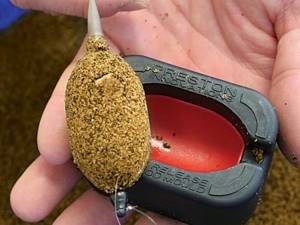
The main thing in bait, as in any food, is the freshness of the ingredients. If low-quality products are added to the feed, the fish may not be attracted. Therefore, preservatives are often added in factories during production, and quickly perishable ingredients are subjected to special processing. Thanks to this treatment, the effect of long-term storage is achieved. Since the treatment process is difficult to achieve at home, DIY production is not recommended for long-term use.
Absolutely any bait should not only look enticing, but also have nutritional value and smell appetizing to the fish.
The most important components of groundbait are crackers.
They differ in production, like crumbs made from:
- White bread.
- Scraps of sponge cakes, liver, gingerbread.
- Rye bread.
The main ingredient in the mixture is bran. Residues from flour milling can be actively eroded in the aquatic environment.
The feed is rich in protein and a set of valuable microelements. Soybean cake and sunflower are the main components of increased protein. Soybean meal is made by pressing the oil from soybeans. The composition of the cake has a large amount of vitamin B and is low in fiber. The content in the bait is no more than 20%, since this component loosens the bait.
Sunflower also has a number of nutrients, but its increased oiliness does not allow it to be stored for more than 2-3 weeks.
Popular ingredients in aquarium fish food
When selecting aquarium food, it is important to look at its composition and the mass fraction of nutrients, because cunning manufacturers can add various kinds of fillers to the food to increase the weight of the food itself and reduce its cost.
Technically, such fillers can serve as food, but their energy value is quite low, which will lead to constantly hungry fish. This will not affect their health or coloring, but they will always want to eat and if they are not fed a couple of times, the plants and soil in the aquarium may begin to suffer, which they will tear up in search of food.
Dry foods in the form of flakes, chips, tablets from unknown manufacturers are often found to be low in calories, and therefore it is extremely important to study the mass fractions of those substances that are present in the aquarium food that you decide to buy for your fish.
Below is a list of ingredients that will be extremely useful in your fish food.
Fish meal
It is made from everything that is not used for ordinary commercial fish consumption, in other words, the crushed remains of fish of different breeds. It is a source of amino acids and, in general, a very good ingredient for aquarium food.
Shrimp meal
Same as fishmeal except for one thing. It also contains pigment, which enhances the brightness of the fish’s color and therefore this component is very desirable in fish food. Made from shrimp that are not suitable for human consumption for any reason.
Squid meal
This ingredient is valuable for its high protein content and also contains many vitamins and minerals. Actually, it is made from squids, their organs and other cephalopods. Can increase appetite in aquarium fish, in particular.
Earthworms meal
Flour from mealworms and other worms, which for some reason were not useful in conventional production. An excellent source of protein and fat with a high vitamin D content. Good for cichlids.
Spirulina
These are crushed blue-green algae, which are the most nutritious and beneficial ingredient in the food. An excellent source of vitamins A, B1, B2, B6, B12, C, E, beta-carotene, essential fatty acids, 8 amino acids (proteins) and minerals.
Feed additives for better bait
As bait, compound feed is very popular among fishermen. Fish hunters use it mainly when fishing for carp or crucian carp. Granular mixtures are also good for baiting rudd.
For the most successful luring of fish, the compound feed must be additionally equipped with bait and flavoring in a ratio of 3:1, that is, 3 parts of the compound feed will be 1 part of the bait. And when feeding carp, it is recommended to add additional corn.
Before you go fishing, the feed should be poured with boiling water and left overnight, wrapped in a towel. This steamed bait is often suitable for hooking.
Compound feed is also used for fattening individuals intended for fish breeding. The most popular species for breeding is carp.
You need to know that the main food consumed by carp are:
- aquatic plants;
- plankton (organisms that live in water);
- benthos (organisms that are at the bottom of the pond).
When preparing bait for carp, you can add almost anything edible to the feed. The only thing is that it is not necessary to use protein ingredients (worms, maggots, bloodworms) in the summer.
Compound feed is an excellent way to feed fish. In addition, it is very economical, since a bag of such a product lasts on average 2 months of periodic fishing.
Preparation of bait from fish feed
Preparing groundbait from mixed feed is quite simple, but the method of preparation will depend on the type of mixture. So, with a granular product, you can cover a rich feeding table without any type of additives, gradually holding the fish with new casts in the case of long-term fishing, lasting two or three days. The optimal solution would be to properly steam the mixed feed for fishing, bringing the mixture to a viscous state, in case of short-term fishing.
Depending on the hunting season, flavorings or additional ingredients are added to the plastic steamed complementary food. It’s even easier to make bait with loose substances. After all, all that remains is to mix crushed grain or peas into the base, mix it with boiled porridge or animal additives, such as chopped worms, bloodworms or maggots, and then moisten it and begin fishing. Depending on the requirements for feed according to the fishing conditions, mixes are diluted with earth, clay and sand, thoroughly mixing the ingredients, molding them into balls and adding them to the feeding area.
Important! Fishing practice has proven that moisturizing bait mixtures should be done not with tap water, but with portions of water taken directly from the fished reservoir.
It will be useful to gain practice by including so-called highlights in homemade bait recipes, in the form of special flavors or attractants that stimulate the fish to approach the fishing points. The nuances of using aromatic additives are analyzed when fishing in each individual reservoir, noting the more effective options in terms of catches, and subsequently using them on an ongoing basis. After all, your homemade bait should be more attractive to the fish than the owner’s ordinary food and should attract the fish to the hunting site faster.
Feed baits
You can use either whole granules of mixed feed as fishing baits, or you can make some kind of aromatic dough from it with your own hands.
On a note! By the way, such a fashionable bait as pellets is nothing more than a kind of compound feed.
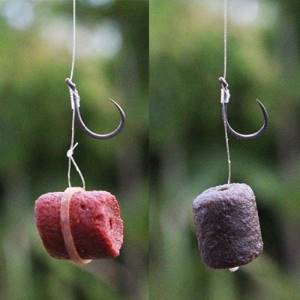
The attached pellet can be attached to the hook in different ways: using a thin silicone ring or like a carp boilie through a longitudinal hole.
Catching carp with mixed feed can be done in another way. Pre-steamed feed is kneaded to a dough-like state. At the same time, sunflower oil, honey, flour and other ingredients are added to it to improve its consistency and attractiveness from the point of view of fish.
In addition to the natural smell of mixed feed, such a dough can also be given another aroma using natural or chemical attractants. Based on the resulting dough, you can make inexpensive boilies by simply boiling balls of the required size in boiling water. In this form, the bait will be stored much longer.
Benefits of fish feed
There is no doubt that fish combined feed mixtures have a number of significant advantages and undeniable advantages in relation to even purchased professional baits. Comparing the price parameter, and it is noticeably lower for the product we are considering, one can notice significant differences in the cost level of these mixture options, although in terms of final effectiveness, sometimes there is no difference in application at all.

The versatility of the composition is expressed in the fact that it is used both as bait and in the direction of direct bait, which can be prepared in several different formats. Sometimes the fisherman does not even have to expend effort on preparing baits or baits from this product, using the factory version of the mixture or granules. This strategic technique is especially successfully used by fishermen on paid ponds with local fish accustomed to this type of food.
The balance of feed with nutritious ingredients, substances that stimulate the growth and appetite of fish, makes it possible to prepare not only bait for bream, carp and other peaceful fish, but also cases of attracting perch, trout, catfish and grayling to fishing spots. And one of the important aspects of the use of compound feeds is their suitability as a basis for preparing all kinds of options for homemade homemade bait mixtures.
As a rule, basic microelements and biologically active additives are not required for cooking, since the feed is already seasoned with these ingredients. All that remains for the fisherman is to add an attractive animal component, diluents, attractants and, if necessary, dyes to the homemade bait and begin the process of forming a bait table at the selected fishing point.
Crustaceans
From crustaceans, cladocerans are grown, decapsulated eggs of Artemia salina or its nauplii are obtained, and, in the future, water donkey.
Growing Cladocera Crustaceans
Such crustaceans are mass forms of zooplankton in most water bodies. Their active development is due to the possibility of rapid reproduction of the population due to precocity and high fertility. The importance of cladocerans in fish nutrition is enormous. Juveniles of all fish species feed on zooplankton, in which these crustaceans occupy a large proportion. Of the large number of cladocerans, daphnia and moin are most often used for breeding.
The latter are high-protein food, not only for fish, but also for other animals and birds. In terms of chemical composition, cladoceran crustaceans are not much inferior to animal feed, for example, fish meal.
Reproduction in cladocerans can be sexual and parthenogenetic, depending on environmental conditions.

Early maturity and high fertility allow these crustaceans to create huge biomass in a short time. Therefore, moin and daphnia are bred in fish farms. The methods of their reproduction are varied: in the open air, indoors in special devices.
Cladocerans are grown with food and separately, when food is received in separate containers and then served in containers with crustaceans. The first method is simpler and accessible to any fish farm, but it is less productive. There are a lot of options for growing crustaceans and their food together, and they have found application in pond farms. The caught crustaceans are fed to the fish.
Cultivation of crustaceans in pools is carried out at sturgeon hatcheries. Instead of organics, minerals are used. The productivity of such pools reaches 20 g/m3. per day. Moin is also grown in pools using the same method. In this case, the productivity is up to 50-100 g/cubic meter per day. Cultivation of crustaceans is carried out in floating and submerged cages. In the first case, the cage in which the daphnia are placed floats on the surface of the reservoir. Daphnia is fed. They reproduce, and the young go through the mesh cage into the pond, where they grow and are then eaten by fish. Submerged mesh cages are populated with a mother culture of daphnia or moina and lowered to the bottom of a flowing water source, which has a high concentration of organic matter. After a certain time, the cage is raised to the surface, and the crustaceans are placed in fish ponds or pools.
Growing moins in special cultivators is carried out on industrial farms. The productivity of a special cultivator is up to 600 g/m3. per day.
The method of growing daphnia and moinae directly in nursery ponds was developed by I. B. Bogatov. Its essence lies in the fact that during the period of filling the pond, about 200 g of crustaceans are added to it. They quickly occupy a dominant position and, with their numbers, inhibit the development of other forms of zooplankton. This method allows increasing the productivity of nursery ponds by 250 kg/ha.
Crustaceans are used live, frozen and dry, in the form of powder added to the feed mixture.
The created feed mixtures were tested in aquarium conditions, and their high efficiency was proven.
